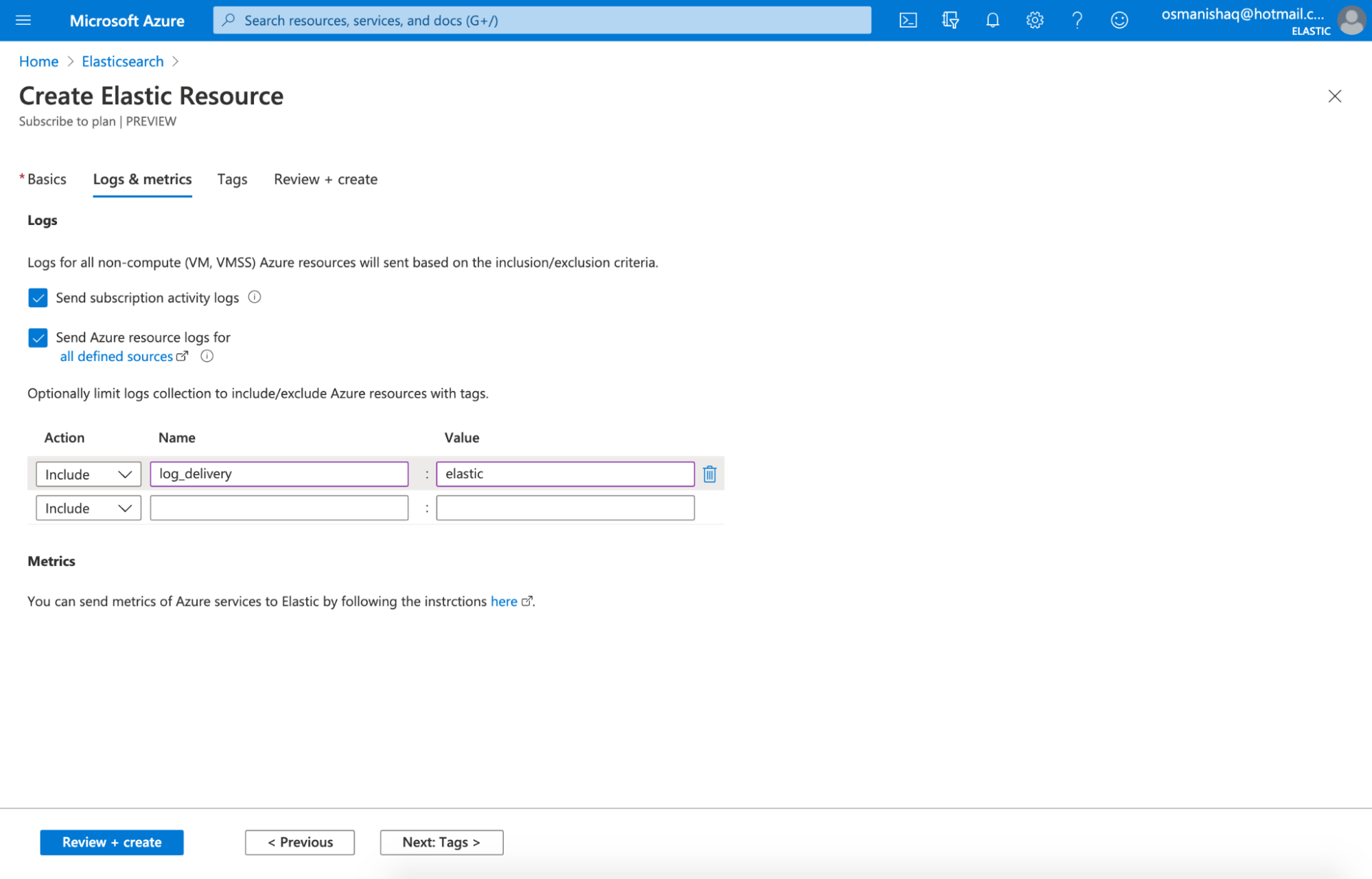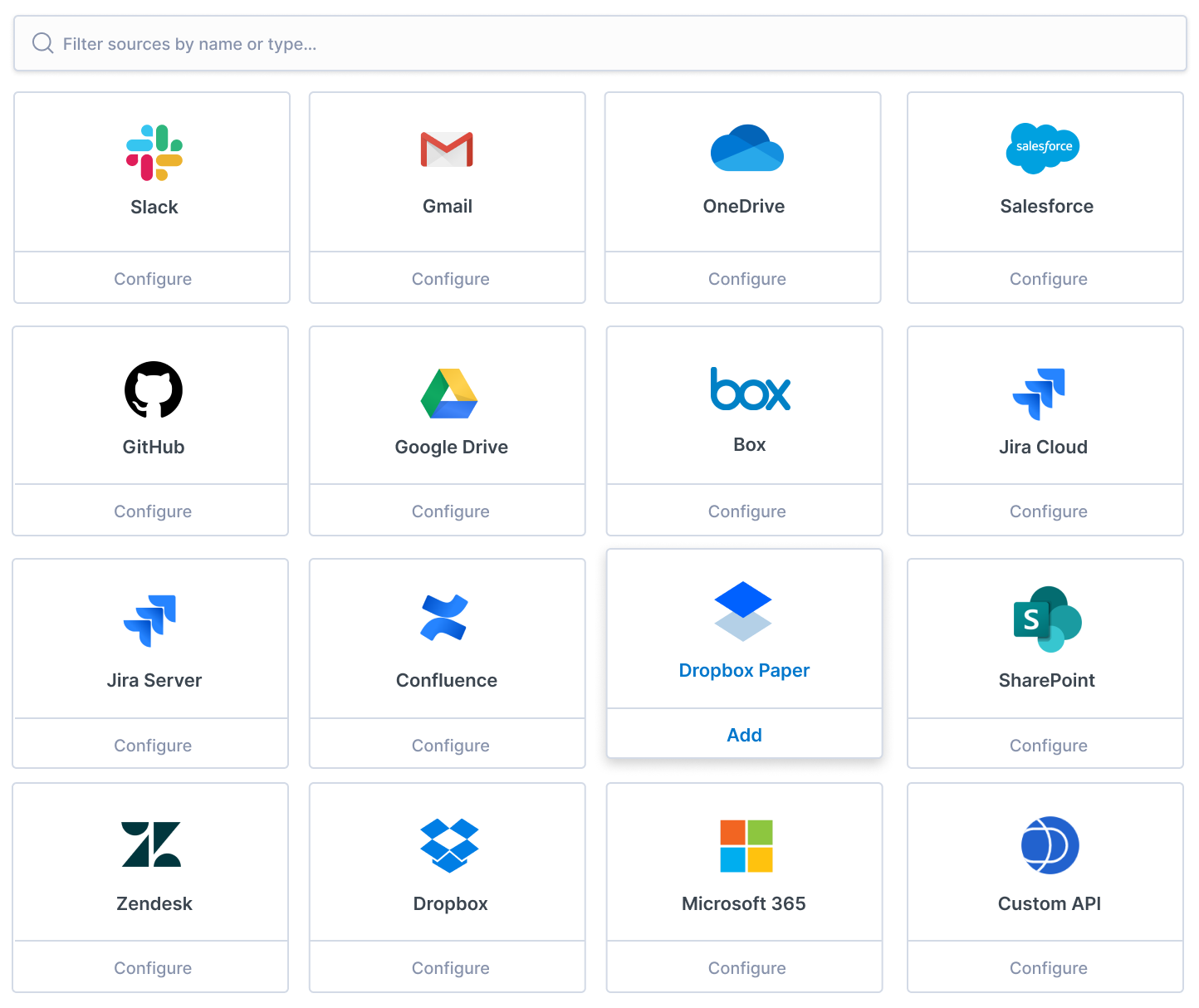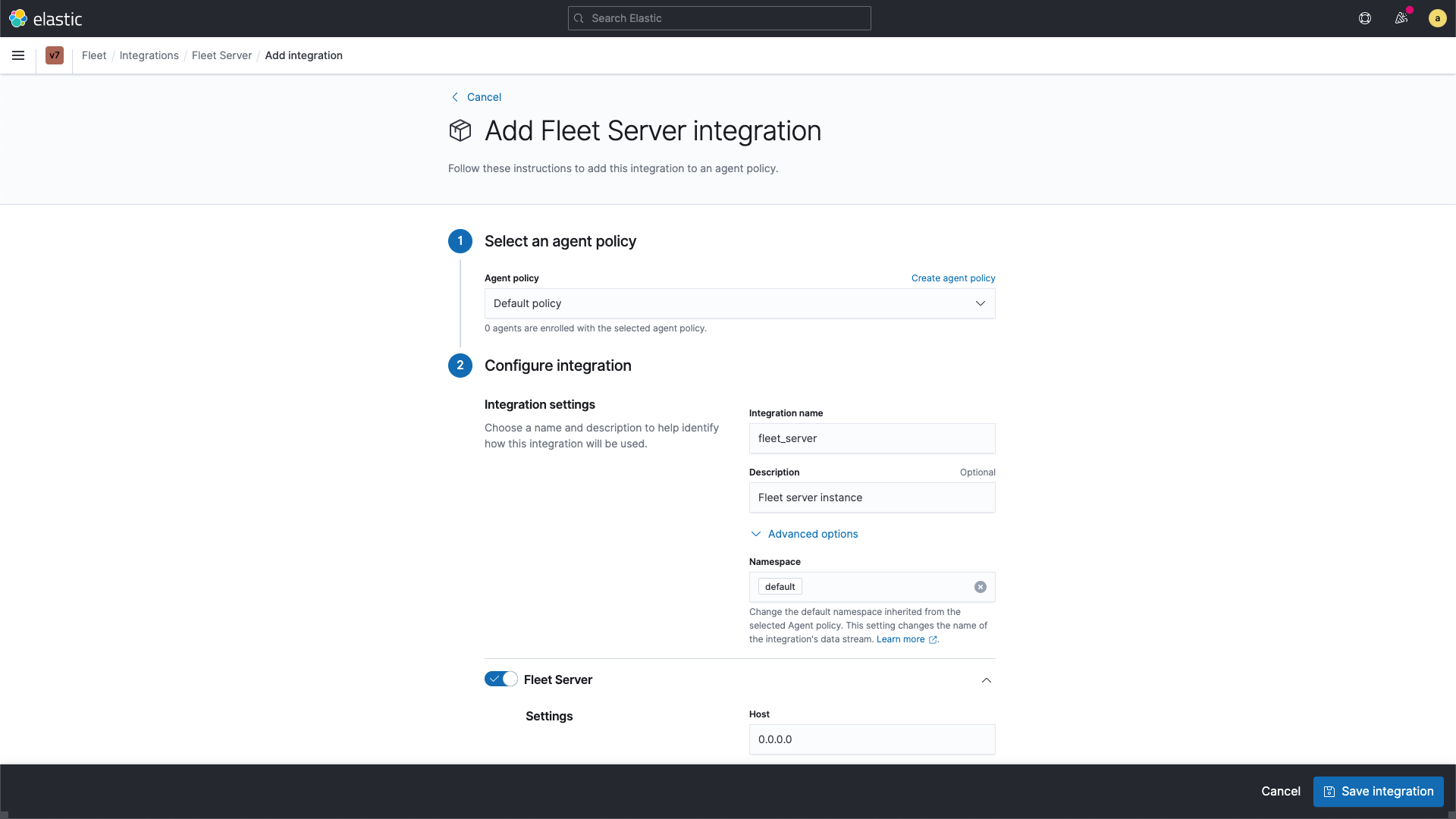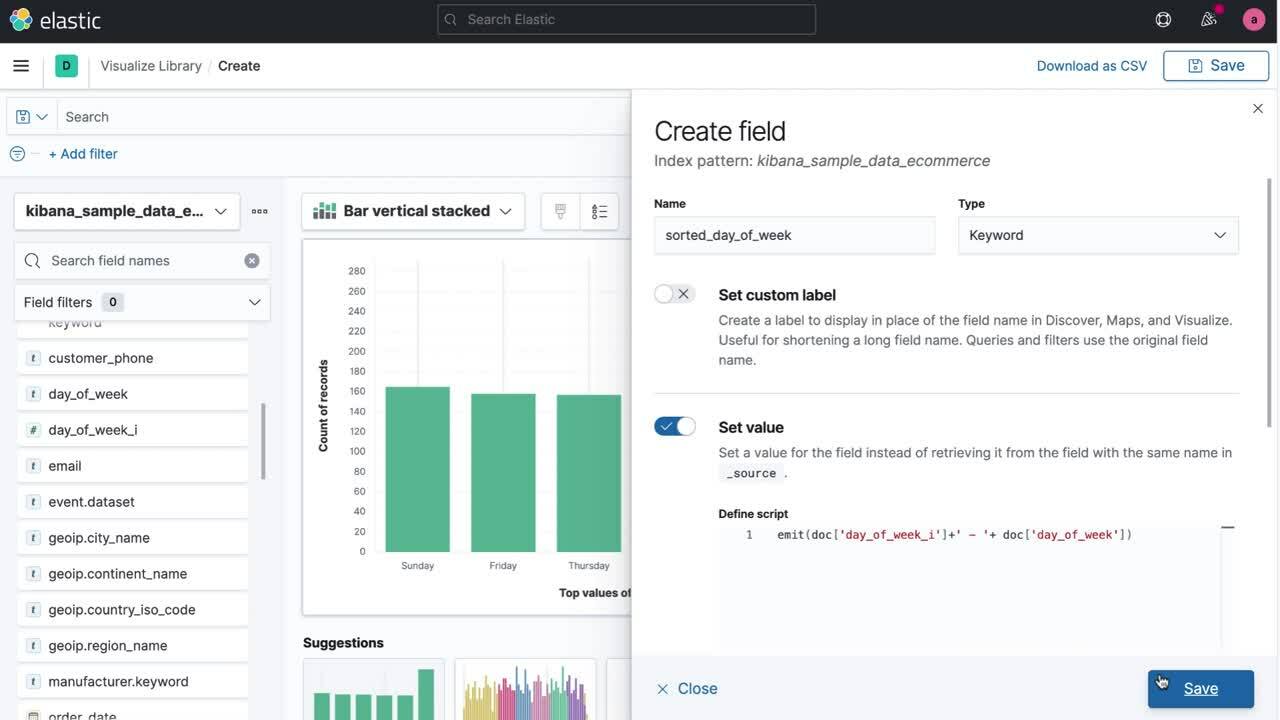Elastic 7.13.0 released: Search and store more data on Elastic
Key enhancements include cost-effective search across more data with searchable snapshots and the frozen tier, analyst-driven data enhancements on the fly with runtime fields, and expanded Microsoft integrations
We are pleased to announce the general availability (GA) of Elastic 7.13. This release brings a broad set of new capabilities to our Elastic Enterprise Search, Observability, and Security solutions, which are built into the Elastic Stack — Elasticsearch and Kibana. This release enables customers to search petabytes of data in minutes cost-effectively by leveraging searchable snapshots and the new frozen tier. Analysts can now enhance data on the fly using runtime fields, our implementation of schema on read, in Kibana Lens and Discover.
And we are building upon our Microsoft partnership with enhanced integrations that let you find and deploy Elastic directly from the Azure console and natively integrate observability and security data from Azure services.
Take a look at the key enhancements across Elastic Solutions, including expanded content sources for Elastic Workplace Search with Dropbox integration and new custom source APIs, granular search optimization in Elastic App Search with a precision tuning API, enhanced scalability and flexibility for data ingest with the new Fleet Server, and osquery support in Elastic Security.
The best part? Elastic 7.13 is available now on Elastic Cloud — the only hosted Elasticsearch offering to include all of the new features in this latest release. You can also download the Elastic Stack and our cloud orchestration products, Elastic Cloud Enterprise and Elastic Cloud for Kubernetes, for a self-managed experience.
Elastic Stack and Elastic Cloud
Search petabytes of data in minutes with the new frozen tier
Customers will no longer need to choose what data they need to keep or delete. The frozen tier, now generally available, allows customers to store and search petabytes of data easily and economically. The frozen tier removes the constraint of storing data locally, allowing customers to search orders of magnitude more data cost effectively by searching data stored on object storage. Search across petabytes of data for a security investigation or have logs, metrics, and traces without limits within minutes time.
Although storing data in object storage is cost-effective, it has impacts on search performance. Elastic delivers the best cost/performance by fetching only the data needed to complete a query from the object store and caching data locally as needed. Whether our customers are building dashboards or running queries against enormous datasets, the frozen tier offers the best possible search experience.
The frozen tier is also available across Elastic Cloud, Elastic Cloud Enterprise, and Elastic Cloud on Kubernetes. It’s fully integrated with autoscaling, allowing you to seamlessly scale to store and search massive amounts of data.
Bring powerful enterprise search, observability, and security capabilities to your Azure environment with enhanced Microsoft integrations
We’re excited to announce the latest development in our ongoing partnership with Microsoft. Available in public preview, you can now quickly find, deploy, and manage Elasticsearch directly from within the Azure portal. Take advantage of simplified ingestion for Azure platform, virtual machine, and other resource logs, while accelerating time to value for observability. Easily add Workplace Search so knowledge workers can find information across collaboration tools and data repositories. Implement intelligent threat protection, and utilize machine learning capabilities for anomaly detection to help secure your Azure environment. In addition, you can benefit from consolidated billing, single sign-on to the Elastic Cloud console using your Azure credentials, support for Private Link (private beta), and more. Read the getting started blog to get all of the details.

Go from data visualization to data enhancement in a couple of clicks - runtime fields for analysts in Discover and Kibana Lens
Ever had a great question you wanted to delve into but didn’t have the data you needed to explore? Runtime fields in Discover and Kibana Lens are the first step in giving analysts the power to shape their data to answer more extensive and innovative questions — and gain insights quickly.
Runtime fields empower analysts to explore and enhance the data they work with. Using the runtime fields editor, analysts can create fields on the fly from Discover and Kibana Lens, allowing them to format, modify, and transform data without navigating to other screens or calling upon Elasticsearch admins.
This flexibility enables analysts to be more independent in their data exploration, giving them the power to make changes directly from their workflows and see results on the spot.
Empower data scientists and data enthusiasts with a single place to store, transform, build, test, and deploy supervised machine learning models
Elastic’s supervised machine learning, now generally available, helps customers answer questions like, “when will a customer churn?,” or “when might my hard drive fail?”, or “what is the classification of this new security threat?” — all on a single Elastic stack.
Most data scientists today need a tool to store data, a tool to transform that data, a tool to train a data model, a separate tool to apply predictions from that model, and yet another a tool to visualize and take action on this data. Elastic has been developing features that reduce this tool sprawl and complexity, and deliver an end-to-end machine learning pipeline that provides customers with a single solution to operationalize and simplify data science.
Both supervised machine learning and anomaly detection are built on the Elastic Stack and tightly integrated into Elastic solutions like Elastic Security and Observability.
Read about these features and more in the Kibana 7.13 blog, the Elasticsearch 7.13 blog, and the Elastic Cloud 7.13 blog.
Elastic Solutions
Elastic Enterprise Search
Search more content with Workplace Search through new Dropbox integrations and an enhanced custom source API
Searching and collaborating using Dropbox is even more powerful with Elastic Workplace Search, which now supports Dropbox Paper, and offers complete document-level permission synchronization across all Dropbox content.
Your development teams can also more easily ingest and manage content from any content source, including legacy and custom applications, thanks to the new custom source management APIs. The new endpoints allow for programmatic, on-the-fly creation and operation of sources without the need for manual setup.

Right-size your search engine result set with the new Elastic App Search precision tuning API
Now in beta, Elastic App Search’s new precision tuning API empowers you to adjust the recall and precision of your website or application search results. Easily configure how broad or tight your search results should be with a single API call or parameter at query time to adapt your App Search deployment to suit your exact needs.
Get a scoop on all of the new Elastic Enterprise Search features in the Elastic Enterprise Search 7.13 blog.
Elastic Observability
Onboard logs and metrics for Azure services to Elastic Observability in a few clicks with expanded Microsoft integration
We have enhanced support for Azure monitoring use cases with our new expanded native Microsoft integration, letting users easily onboard logs and metrics for their Azure services to Elastic Observability in a few clicks. This includes both compute services like VMs and containers, and non-compute services like Azure SQL Database and Azure Data Factory. Tag-based filters allow you to easily configure your setup to limit data collection to only specific resources. Logs and metrics are automatically written in the Elastic Common Schema (ECS) format, making it easy to correlate data not just from your Azure infrastructure, but also data from non Azure sources.
Leverage additional scalability and flexibility of data ingest architectures with the new Fleet Server, now in beta
Elastic Agent is a single agent that unifies collection of security and observability data and makes installation and management of data integrations easier. Fleet is a new app in Kibana that lets you centrally manage an entire fleet of Elastic Agents. Together, these improvements dramatically lower total cost of ownership and time to value for platform owners and users of Elastic Observability and Security.
With this release, some of the key features include:
- Fleet Server, a new architecture component that can be deployed centrally or at the edge, improving scalability and flexibility of supported ingest architectures
- Auto-discovery support for Kubernetes, improving ease of deployment in highly dynamic orchestrated environments
- Support for APM server, allowing users to centrally manage APM server from Fleet
- Support for Heartbeat, our uptime monitoring engine, enabling users to enable HTTP checks via a graphical interface
- Full support of this release on day one in Elastic Cloud, including hosted Fleet Server functionality fully managed as part of your deployment

Since this is a beta release, it is not recommended for production deployments. Pre-beta version testers should review the release notes for breaking changes.
Dive deeper into all the new features in the Elastic Observability 7.13 blog.
Elastic Security
Empower analysts to ask Elastic Security anything, including OS context from hosts with new osquery support
Elastic Security 7.13 introduces a free and open platform for central management of osquery deployed with Elastic Agent. With one click, users can install and orchestrate osquery across their Windows, macOS, and Linux hosts. The solution arms analysts with direct access to rich host data from across the ecosystem, retrievable with prebuilt and custom SQL queries for analysis in Elastic Security.
Osquery is an incredibly useful tool, built by a vibrant open source community and popular with Elastic users. But even today, managing osquery is challenging. We asked practitioners, and they were clear: putting osquery in analyst hands would help move security forward. So starting with the capabilities in this release, we’re helping organizations harness both the visibility of osquery and analytical power of Elastic. That’s free and open, for the win.

Elastic Security 7.13 also delivers enhancements that help organizations operationalize threat intelligence, address new use cases with the detection engine and machine learning, and ingest new data sources.
Get all the details in the Elastic Security 7.13 blog.
There’s always more...
So much more. Check out the individual solution and product blog posts for the details on everything we added in 7.13:
Elastic Stack
Elastic Cloud
What’s new in Elastic Cloud for 7.13?
Elastic Solutions
Elastic Enterprise Search 7.13 released
Elastic Observability 7.13 released
Elastic Security 7.13 released
Get started with a free trial on Elastic Cloud.
The release and timing of any features or functionality described in this post remain at Elastic's sole discretion. Any features or functionality not currently available may not be delivered on time or at all.

